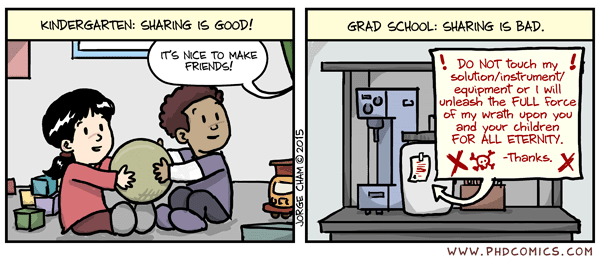 Good, modern equipment is important to keep us in the forefront of research and for us to be able to use the latest techniques to test hypotheses. Limited funding means equipment purchases must be prioritized. At K2, we have tried to make the utilization of these funds better partly by making a complete overview of the major items of equipment at the institute, and partly by introducing a more standardized reporting of equipment needs. That way, equipment that may have many users could be prioritized. Meanwhile, one can avoid unnecessary equipment purchases if similar equipment already exists in the department or the faculty.
Good, modern equipment is important to keep us in the forefront of research and for us to be able to use the latest techniques to test hypotheses. Limited funding means equipment purchases must be prioritized. At K2, we have tried to make the utilization of these funds better partly by making a complete overview of the major items of equipment at the institute, and partly by introducing a more standardized reporting of equipment needs. That way, equipment that may have many users could be prioritized. Meanwhile, one can avoid unnecessary equipment purchases if similar equipment already exists in the department or the faculty.
If equipment gets broken, it’s a long process to replace it. The actual tendering process takes its time, but often it is more difficult to find funding quickly. One solution is that the department has a reserve fund from which one could “borrow” to quickly replace essential equipment. K2 will work to find a solution like this.
Good equipment utilization requires discipline and cooperation. Those who “own” the device must be willing to share equipment, and those who borrow equipment must show responsibility by learning how to handle the equipment correctly, use the logbook, and if necessary use from their own funds if upgrade and repair is required.
Equipment wishes can be reported continuously and will be processed in the extended management team.
I wish you all a nice weekend.
Eystein Husebye



 In July Brith Bergum took over as the daily manager of the Flow Cytometry Core Facility after Marianne Enger.If anyone has any questions or just want to come and say hello, you will find her at the 5th floor in the laboratory building. The Flow Cytometry Core Facility has also gotten a new cell sorter from SONY.
In July Brith Bergum took over as the daily manager of the Flow Cytometry Core Facility after Marianne Enger.If anyone has any questions or just want to come and say hello, you will find her at the 5th floor in the laboratory building. The Flow Cytometry Core Facility has also gotten a new cell sorter from SONY.